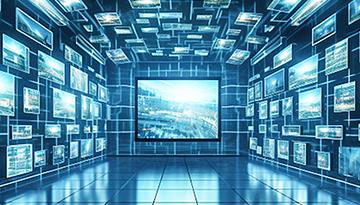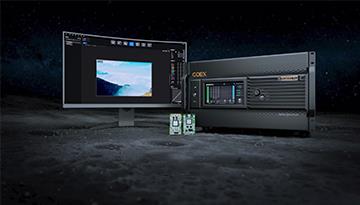Home > News > Industry News
Website:www.ledtransparency.com Date:2022-10-08
The gray scale of LED electronic display can also be called LED brightness. Gray scale, also known as half tone, is mainly used to transfer pictures. There are three levels: 16, 32, and 64. It uses matrix processing to process the file pixels into 16, 32, and 64 levels to make the transferred pictures clearer. Whether it is monochrome, bicolor, or LED full-color electronic display screen, to display images or animations, it is necessary to adjust the light intensity of each LED that constitutes the pixel. The fineness of the adjustment is what we usually call the gray level.
LED display screen has two methods to control LED gray scale: one is to change the current flowing, the other is pulse width modulation. 1. Change the current flowing through the LED. Generally, the LED tube of LED display screen allows a continuous working current of about 20 mA. Except that the red LED is saturated, the gray scale of other LEDs is basically proportional to the current flowing through; The other method is to use the visual inertia of the human eye to realize the gray control by using the pulse width modulation method, that is, periodically change the light pulse width (i.e. duty cycle). As long as the cycle of repeated lighting is short enough (i.e. the refresh rate is high enough), the human eye cannot feel the light emitting pixels shaking. Because pulse width modulation is more suitable for digital control, almost all LED electronic displays use pulse width modulation to control the gray level today when microcomputers are widely used to provide LED electronic display content. The control system of LED display screen is usually composed of three parts: main control box, scanning board and display and control device.
The main control box obtains the brightness data of each color of a screen pixel from the display card of the computer, and then redistributes them to several scanning boards. Each scanning board is responsible for controlling several lines (columns) on the LED display screen, and the display and control signals of the LED display screen on each line (column) are transmitted in a serial manner.
At present, there are two methods of serial transmission of display control signals:
1. One is to centrally control the gray level of each pixel point on the scanning board. The scanning board decomposes the gray level value of each row of pixels from the control box (i.e., pulse width modulation), and then transmits the opening signal of each row of LED display screen to the corresponding LED display screen in the form of pulse (1 if it is lit, 0 if it is not lit) in line serial mode to control whether it is lit. This method uses fewer devices, but the amount of data transmitted serially is large. Because in a cycle of repeated lighting, each pixel needs 16 pulses at 16 levels of gray and 256 pulses at 256 levels of gray. Due to the device's operating frequency limitation, LED screens can only achieve 16 levels of gray.
2. One is pulse width modulation. The scanning board serial transmission content is not the switch signal of each LED display screen, but an 8-bit binary gray value. Each LED has its own pulse width modulator to control the lighting time. In this way, in a cycle of repeated lighting, each pixel only needs 4 pulses at 16 levels of gray and 8 pulses at 256 levels of gray, greatly reducing the serial transmission frequency. The method of decentralized control of the gray level of LED display screen can easily realize 256 level gray level control.
Author: kewei
This article from:http://www.ledtransparency.com/news.html

2024-06-13
In recent years,LED display and LCD display as the two giants in the field of display, what is the difference between the two? How do we choose? This article will explain in detail for you.

2024-05-30
For the well-known LED display is how to accurately play and show the picture effect we want? This article takes you to understand the brain controller of LED display: LED display control system.

2023-11-20
Step into any modern-day sports stadium, and you'll be greeted by an awe-inspiring sight: the grandeur of stadium LED screens, transforming the way live sports events are enjoyed.
Add:Building 2, Dalshan Sanlian Industrial Zone, Tangtou Community, Shiyan Street, Bao'an District, Shenzhen, 518108, China.
Tel: +86-755-85275082
E-mail: sophia@screensled.com
Whatsapp:+8615338825322